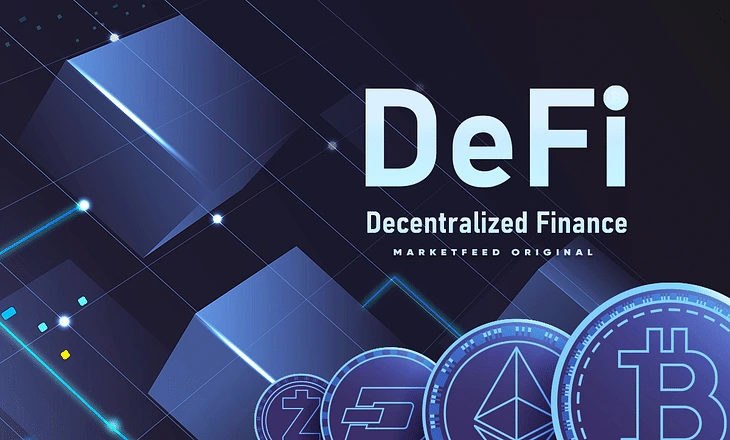Is RWA the Next Big Web3 Opportunity — Or Just Another Hype Cycle?
Technical Breakdown: RWA in Web3
Real-world assets (RWAs) are quickly becoming a central focus in Web3 discussions, offering a potential bridge between decentralized finance (DeFi) and traditional financial systems. As crypto markets mature and search for sustainable value beyond speculation, the RWA Web3 opportunity has emerged as a promising—yet complex—solution. By tokenizing tangible assets like real estate, bonds, and invoices, developers and protocols aim to bring real-world utility on-chain. But is this just another passing trend, or the foundation for the next wave of digital finance? This technical breakdown explores how RWAs work, what’s driving their adoption, and the challenges still holding them back.
1. RWA Web3 Opportunity : Definition and Core Mechanics
Real-world assets (RWAs) refer to off-chain, tangible assets—like real estate, bonds, or invoices—that are tokenized and represented on a blockchain. These digital representations function as smart contract-based proxies that allow for transfer, collateralization, and yield generation within Web3 protocols.
Common RWAs include:
- Fixed income (U.S. Treasuries, corporate debt)
- Real estate (fractionalized property shares)
- Commodities (tokenized gold, oil)
- Invoices and receivables (short-term credit instruments)
- Intellectual property and collectibles
At the core, the RWA model depends on oracles and custodians to verify, store, and maintain off-chain data integrity—a significant deviation from crypto-native assets, which exist wholly on-chain.


2. RWA Web3 Opportunity : Why Now? Timing and Market Context
The current cycle is ripe for RWA experimentation for several reasons:
- DeFi Yield Compression: Post-2021, native token incentives and liquidity mining are no longer sustainable for high APY generation. RWA introduces external yield sources (e.g., real-world cash flow, interest) into on-chain environments.
- Regulatory Scrutiny: Protocols are under pressure to justify economic utility. RWAs offer more “regulatory palatable” products, often resembling traditional finance (TradFi) structures.
- Institutional Curiosity: RWAs present a gateway for TradFi players to interact with crypto infrastructure under more familiar asset models, especially via permissioned pools.


3. Protocol Landscape
Several DeFi-native and hybrid protocols are already integrating RWAs into their architecture:
- MakerDAO: Allocated over $1B of its reserves into tokenized U.S. Treasuries through entities like Monetalis and BlockTower, generating real yield for DAI.
- Centrifuge: Facilitates the tokenization of invoices and supply chain assets, allowing SMEs to access DeFi capital.
- Ondo Finance: Tokenizes traditional securities (e.g., short-term Treasuries) and offers them to crypto users.
- Maple and Goldfinch: Enable undercollateralized or real-world backed lending, often focusing on emerging markets or institutional borrowers.
Most protocols utilize off-chain legal wrappers, SPVs (special purpose vehicles), or third-party custodians to manage physical assets or enforce claims.
4. Technical Challenges & Tradeoffs
RWAs introduce friction due to their hybrid nature. Key limitations include:
Trust & Centralization Risks
RWAs rely on custodians, auditors, and legal contracts. This creates trust dependencies and breaks the fully permissionless ethos of DeFi. It also opens protocols to:
- Counterparty default risk
- Custodial mismanagement
- Oracle manipulation
- Legal enforcement failures


Lack of Interoperable Standards
There’s no unified standard for RWA token formats, metadata schemas, or KYC integrations. This creates siloed liquidity and difficulty in composing RWA tokens across DeFi platforms.
UX Complexity
Many RWA-based products involve lengthy disclosures, legal contracts, and compliance processes. This makes the user experience significantly less “DeFi-native” compared to plug-and-play LP farming.
5. Key Technical Value Propositions
Despite these challenges, RWAs offer some powerful innovations:
On-Chain Access to Yield-Bearing TradFi Instruments
Tokenized Treasuries, corporate bonds, or real estate equity offer stable, inflation-resistant income sources—on-chain and composable.
Programmability and Composability
Smart contracts allow new financial primitives like auto-rolling fixed income vaults, on-chain tranching, and real-time revenue distribution.

Global, Borderless Access
Tokenized RWAs potentially unlock global access to financial markets that were previously gated behind geography, banking status, or institutional exclusivity.
6. What’s Actually Working Right Now?
Here’s a look at early implementations with traction:
- MakerDAO’s RWA vaults generate ~$50M+ in annual yield for DAI from real-world debt instruments.
- Centrifuge’s Tinlake pools are supporting invoice and asset-backed financing for SMEs, with tens of millions in TVL.
- Ondo Finance’s USDY token represents a tokenized short-term U.S. Treasury product that competes with stablecoin yield offerings.
Adoption is still small compared to traditional DeFi TVL (~$90B), but the numbers are growing steadily and institutional capital is beginning to trickle in.
7. Final Assessment: Infrastructure or Hype?
RWA in Web3 is not vaporware—it’s an attempt to rewire global capital markets. But it comes with caveats.
Pros:
- Enables on-chain access to trillions in real-world capital
- Adds utility to DeFi beyond speculative leverage
- Attracts institutional legitimacy
Cons:
- Introduces centralization and regulatory dependencies
- UX and composability are still poor
- Unclear how “DeFi-native” this truly remains
Conclusion: RWA Is Early—But Foundational
RWAs might not deliver overnight riches, but they could become the foundational infrastructure layer for a more stable, regulated, and utility-driven Web3. Whether they reshape DeFi—or get buried under regulation and red tape—depends on how the space handles legal integration, UX simplification, and interoperability.
If you care about where crypto’s actually headed—not just where the memes are—RWA should be on your radar. The next phase of Web3 may not be more decentralized… but it might be more real.
Relevant Link : RWA in Web3: 7 Things to Know Before You Buy the Hype




